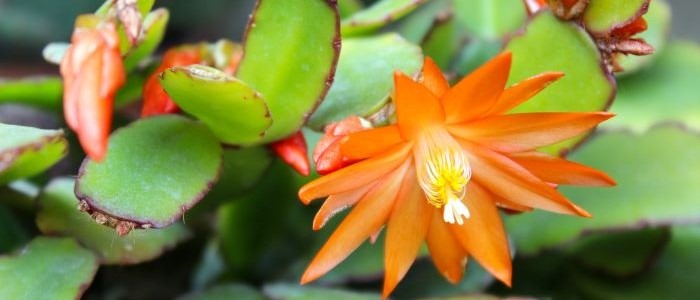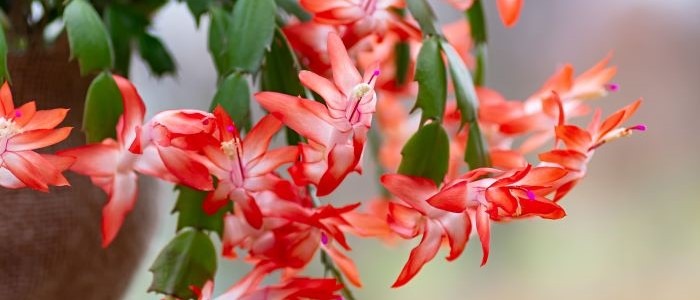Are you thinking about growing the Birds of Paradise flower (Strelitzia reginae) as an indoor plant? Well, you have come to the right place. This unusual plant requires little effort, and it offers rewards in its signature orange color as well as large, shiny green leaves.
Known by many different names this unusual flower resembles a tropical bird, with three blue petals. You will be delighted with this plant as they produce vibrant displays of flowers, adding a tropical feel to your indoor space. Birds of Paradise can withstand plenty of abuse and neglect, and when given the right conditions, will flourish and grow their best.
Let’s take a closer look at how to care for this amazing plant with orange flowers.
Bird of Paradise Frequently Asked Questions
Is the bird of paradise plant easy to care for?
The Bird of Paradise plant is relatively easy to care for, it can withstand plenty of abuse and neglect, and when given the right conditions, it will flourish and grow its best. It prefers medium to high humidity, so keep the humidity levels at a high level.
How do I get my bird of paradise to flower?
It needs sun or a brightly lit spot. One of the most common reasons a Bird of Paradise will fail to bloom is that it's not getting enough light. These plants require at least four to six hours of full sun each day to bloom.
Can birds of paradise grow in pots?
Bird of paradise also grows well in containers. The plant appreciates being a little crowded and will flower well under these conditions. In areas where winters are cool, move the bird of paradise container indoors to a heated, sunny room and then back outdoors in spring.

Taking Care of the Bird of Paradise Plant
A good care plan includes regular pruning to thin out the leaves and keep the plants healthy and strong. Normally, a newly planted Bird of Paradise plant does not flower for several years, but fertilizing it once every three weeks will encourage the plant to bloom. Fertilizing your plant should be done at least an hour before it needs to be watered. When pruning the plant, avoid cutting the roots too deeply.
In the summer, you can move your Bird of Paradise plant outside to enjoy the sunshine. This tropical plant grows rapidly and needs a certain size to bloom.
Plants that are three to four feet tall can grow in a 10-inch pot, but larger ones should be grown in a 14-inch pot.
When it reaches its mature size, you can divide it and move it to another location. It produces its most beautiful blooms when its leaves form a dense clump, so avoid repotting it too often, as it will disrupt the plant’s bloom cycle.
It is best to keep the Bird of Paradise plant in a room where the temperature is warm and humid. It prefers medium to high humidity, so keep the humidity levels at a high level. Avoid watering your plant too frequently, as it can cause root rot. Keep your Bird of Paradise plant away from drafts, too, because it will grow larger and bloom faster in large rooms.
Propagating the Bird of Paradise Flower
Depending on the species, you can propagate the Bird of Paradise Flower in soil or a pot. Bird of paradise prefers a root-bound environment, so the roots should not be allowed to become too free. It needs time to establish a root system. Once the plant has been planted for about three months, fertilize it with organic manure. After that, it will flower in one to three years.
The plant grows as a perennial, and it is commonly grown in zones 10 and above. The plant can be difficult to grow, but it is widely available in tropical regions. The plant is hardy in zones 10 and above. It is also very drought-resistant. Propagation is easy, as long as you follow the instructions on the label. For best results, try to plant several plants together. After all, you can always divide them later.
The Birds of Paradise plant can be propagated in two ways: through cuttings and by root division. The latter is easier and is best done early in the spring. If you wish to propagate the plant by means of root division, make sure you make a clean cut and apply the rooting hormone. After you do this, plant the cut in a pot with good soil. For best results, make sure to soak the seeds for a full day before transplanting them.
After transplanting the seedlings, you need to take special care of the plant to prevent it from drying out and becoming a diseased plant. While the plant is easy to grow indoors, it needs ample sunlight. It does not require full direct sunlight, but it can tolerate a few hours of direct sunlight during the morning or afternoon. Direct sunlight in the hotter part of the day may burn the leaves.
Tips on Pruning the Bird of Paradise Flower
Here are a few tips for pruning the Bird of paradise flower. First of all, it is important to prune the plant only when there are problems with the stem or leaves. It is important not to cut the flower too early, as it will not die but the stem or leaves will show signs of damage. If you prune the flower too early, it will never grow new branches. It should be pruned when the stem or leaves are bare and it is already showing signs of damage.
The next time you prune your bird of paradise, remember to remove any dead leaves. After several months, the tan leaf base will jostle loose. Do not tug the parts too vigorously, as you might snap healthy plant parts. It’s also important to not let the plant dry out too much, as this will cause fungal diseases to spread. It’s also important not to pull the old leaves too hard.
A good pruning saw can cut the leaves to a height that is just above the soil surface. Using a long-handled pruner, you can cut the stems that need cutting.
Common Problems When Growing the Bird of Paradise Flower
In spite of being a popular houseplant, the Bird of Paradise flower can experience pest and disease problems. Some common pests and diseases can affect this flower, which is best avoided by following recommended care instructions. Pests that affect the plant include scale, mealybug, and root rot. To protect your plant, use neem oil and insecticidal soap.
The main problem associated with repotting a bird of paradise is that it requires a certain amount of energy to grow roots, leaves, and rhizomes. This means that repotting your bird of paradise plant can cause transfer shock, which may lead to leaf curling. However, if your bird of paradise is showing signs of being rootbound, repotting is necessary. To avoid disruption of the blooming cycle, repotting should be avoided, unless it is necessary.
Poor drainage of the soil is another common problem. A pot that does not drain properly can lead to waterlogging, which can make roots susceptible to pathogens. Poor drainage can also cause root rot. A good way to prevent this problem is to use pots or saucers that have drainage holes at the bottom. If you have potting soil without drainage holes, you should place a saucer beneath the pot.
Well-drained, fertile soil is essential for a bird of paradise plant. A plant needs fertile soil and organic fertilizer. Fertilize the soil once or twice a month during spring and summer. For outdoor use, you should consider using kelp-based plant food. The plant is easily propagated through seeds, divisions, or cuttings. However, you must keep in mind that dividing the plant is only effective if you do it early in the growing cycle













